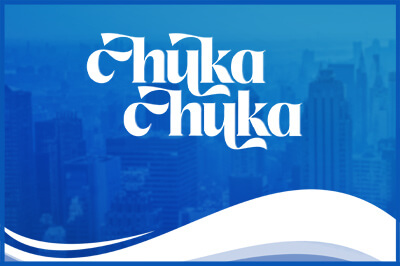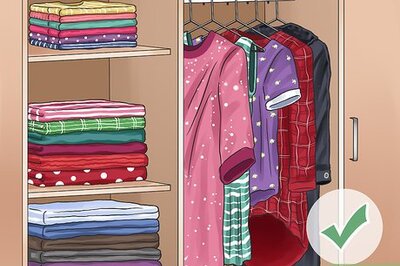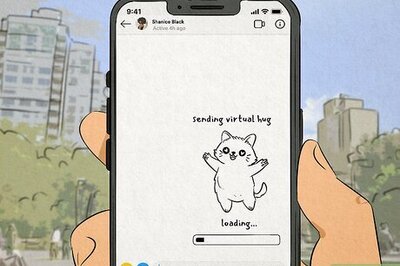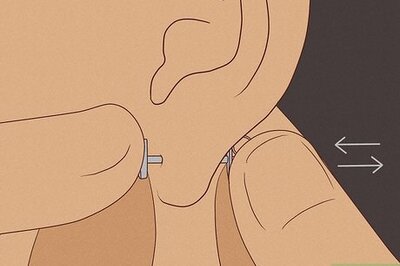
views
Using the Settings App

Open the Settings app. You can do this in a number of ways: Click on the Windows icon in your taskbar, then click on the Settings option. By default, it's under the "pinned" header. Type "settings" into the taskbar search bar and click on Settings in the Start menu that pops up. Press ⊞ Win+I. Right-click the Windows icon in the taskbar and click Settings.
Click Network and Internet. It has an icon of a computer screen and a globe.
Click on your connection type. If you use wireless internet, click Wi-Fi. If you have wired internet, click Ethernet.
Click Edit next to "DNS server assignment." By default, this will be set to "Automatic (DHCP)."
Choose Manual in the dropdown. You'll see two options appear.
Toggle on IPv4. This will cause more options to appear.
Enter your preferred and alternative DNS. You can also choose to do DNS over HTTPS. If you're not sure what to do here, leave these options set to "Off."
Click Save. You can now exit Settings, as your DNS settings are saved. If you'd like to go back to automatic DNS, you can go back into your Settings and change the dropdown back to "Automatic (DHCP)."
Using Control Panel
Open Control Panel. The easiest way to do this is to type "control panel" into the taskbar search bar, then click Control Panel in the Start menu.
Click View network status and tasks. It's the small link under the "Network and Internet" header.
Click on the name of your connection next to the "Connections" label. This will be near the top of the window.
Click Properties. It's near the bottom of the pop-up window. The button also has an icon of a blue and yellow shield, as you need to have administrator access to edit your connection's properties.
Choose Internet Protocol Version 4 (TCP/IPv4). It's near the top of the list in the box in the middle of the pop-up window.
Click Properties. It's under the box in the middle of the pop-up window.
Click the radio button next to Use the following DNS server addresses. By default, your computer will find a DNS server address for you.
Enter a preferred and alternate DNS server. If, for some reason, the preferred DNS server isn't available, your computer will try the alternate DNS server.
Click OK to save your DNS settings. You can now exit the Control Panel. To change your DNS back to automatic, go back into your connection settings and choose Obtain DNS server address automatically.
Using Windows PowerShell

Open Windows PowerShell. There are two ways to do this: Type "powershell" in the taskbar search bar to look for it, then click on it in the Start menu to open it. You can also right-click on the Windows icon in your taskbar and click Terminal to open a Terminal window running Windows PowerShell.
Type the command Get-NetIPConfiguration. Press ↵ Enter to run the command.
Note your InterfaceIndex. Make sure you're looking at the connection that you're trying to change, as you may have more than one if you have Ethernet, Wi-Fi, Bluetooth, etc.
Enter the command to change your DNS. This command is as follows: Set-DnsClientServerAddress -InterfaceIndex [interface_index] -ServerAddresses [dns_1], [dns_2], where [interface_index] is the InterfaceIndex you noted in the last step, [dns_1] is your preferred DNS, and [dns_2] is your alternate DNS. Press ↵ Enter to run the command.
Run Get-NetIPConfiguration to make sure your DNS has changed. You should see the new DNS server addresses after the "DNSServer" label.
Why change DNS servers?
Most people change their DNS server if the automatic server has issues. By default, you'll automatically be assigned a DNS (Domain Name System) server by your ISP (Internet Service Provider). However, you may find that these automatic DNS servers don't work for you for a number of reasons. Here are some of the top reasons people change DNS servers manually: Speed: Sometimes, the automatic DNS server is sluggish, and it can slow you down online. Privacy: Some public DNS servers are more private and secure than others. If you're not sure how private your ISP-assigned DNS server is, you might want to try a different one. Ad blocking: Some public DNS servers will automatically block ads for you. Censorship: If you live in an area where certain websites are blocked, changing to a public DNS server can help you circumvent this censorship. Website blocking: Some public DNS servers will automatically block certain content, such as adult content. This is a good idea if you're a parent, though know that tech-savvy kids can figure out how to change the DNS server to something else if they have access to those permissions on your computer.
Common DNS Servers

There are a number of common public DNS servers you can use. These DNS servers can be used by anyone for free, and you may want to use them if the DNS servers provided by your ISP are slow or have some other issue. The first DNS listed is the primary DNS, while the second is the secondary (or alternate) DNS. Google: 8.8.8.8, 8.8.4.4 Control D: 76.76.2.0, 76.76.10.0 Quad9: 9.9.9.9, 149.112.112.112 OpenDNS Home: 208.67.222.222, 208.67.220.220 Cloudflare: 1.1.1.1, 1.0.0.1 AdGuard DNS: 94.140.14.14, 94.140.15.15 CleanBrowsing: 185.228.168.9, 185.228.169.9 Alternate DNS: 76.76.19.19, 76.223.122.150 Dyn: 216.146.35.35, 216.146.36.36 OpenNIC: 138.197.140.189, 168.235.111.72 Yandex DNS: 77.88.8.8, 77.88.8.1 DNS for Family: 94.130.180.225, 78.47.64.161 Hurricane Electric: 74.82.42.42 CIRA Canadian Shield: 149.112.121.10, 149.112.122.10 Comodo Secure DNS: 8.26.56.26, 8.20.247.20 CenturyLink: 205.171.3.65, 205.171.2.65
FAQ
Does a public DNS give me access to free internet? No, you still need your own internet service to access the internet, regardless of what DNS server you go through.
Can I change my DNS server if I'm on public Wi-Fi? Yes, you can still change the DNS server your device uses if you're on public Wi-Fi. You may even want to do this to add a layer of privacy and security while using public internet.
What is DNS? DNS stands for Domain Name System. When you type a URL into your address bar (i.e. [http://wikihow.com wikihow.com]), DNS will translate that URL into an IP (Internet Protocol) address that your browser can actually understand (i.e. 151.101.129.91). Without DNS, we'd have to memorize the IP address of each website we want to access.



















Comments
0 comment